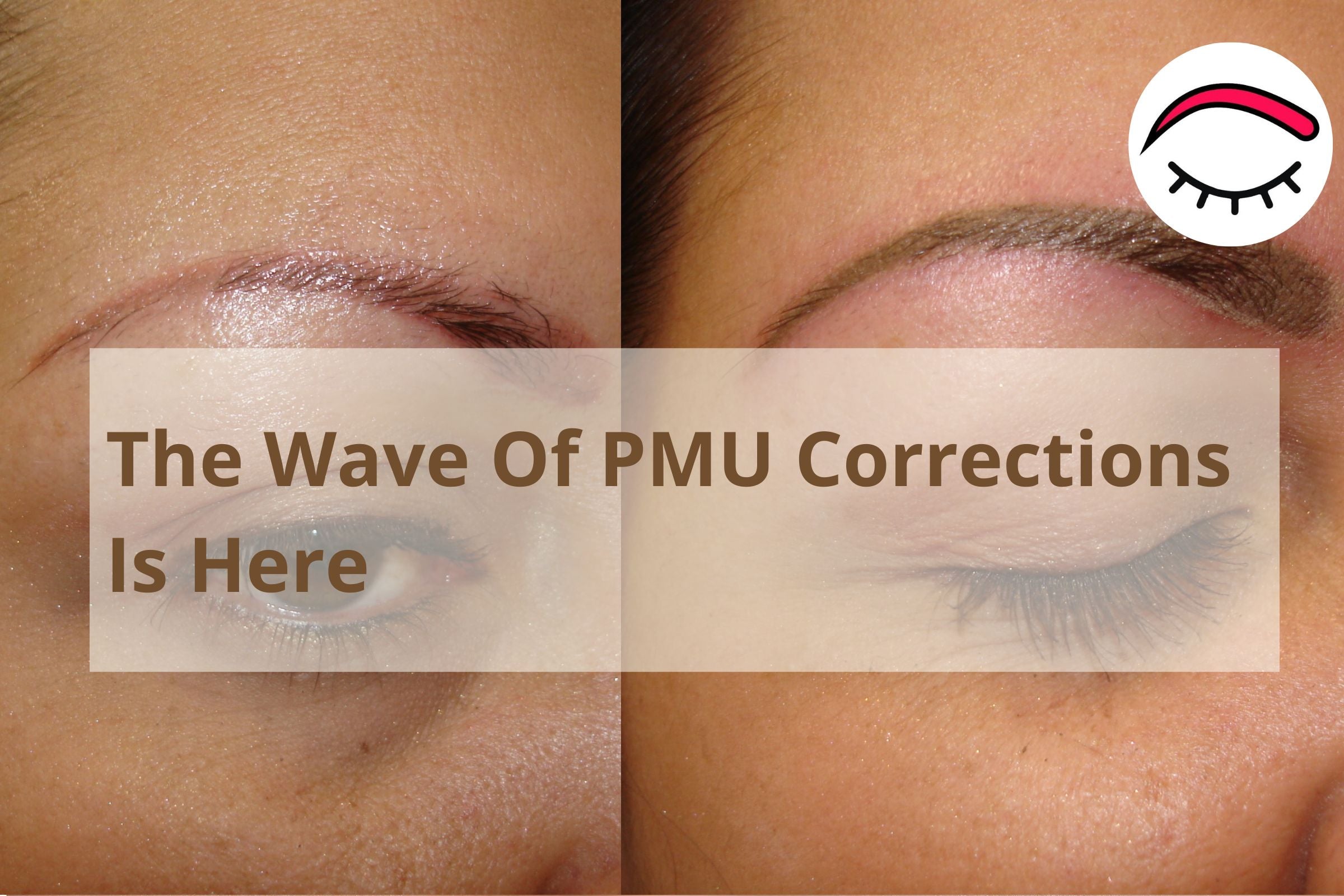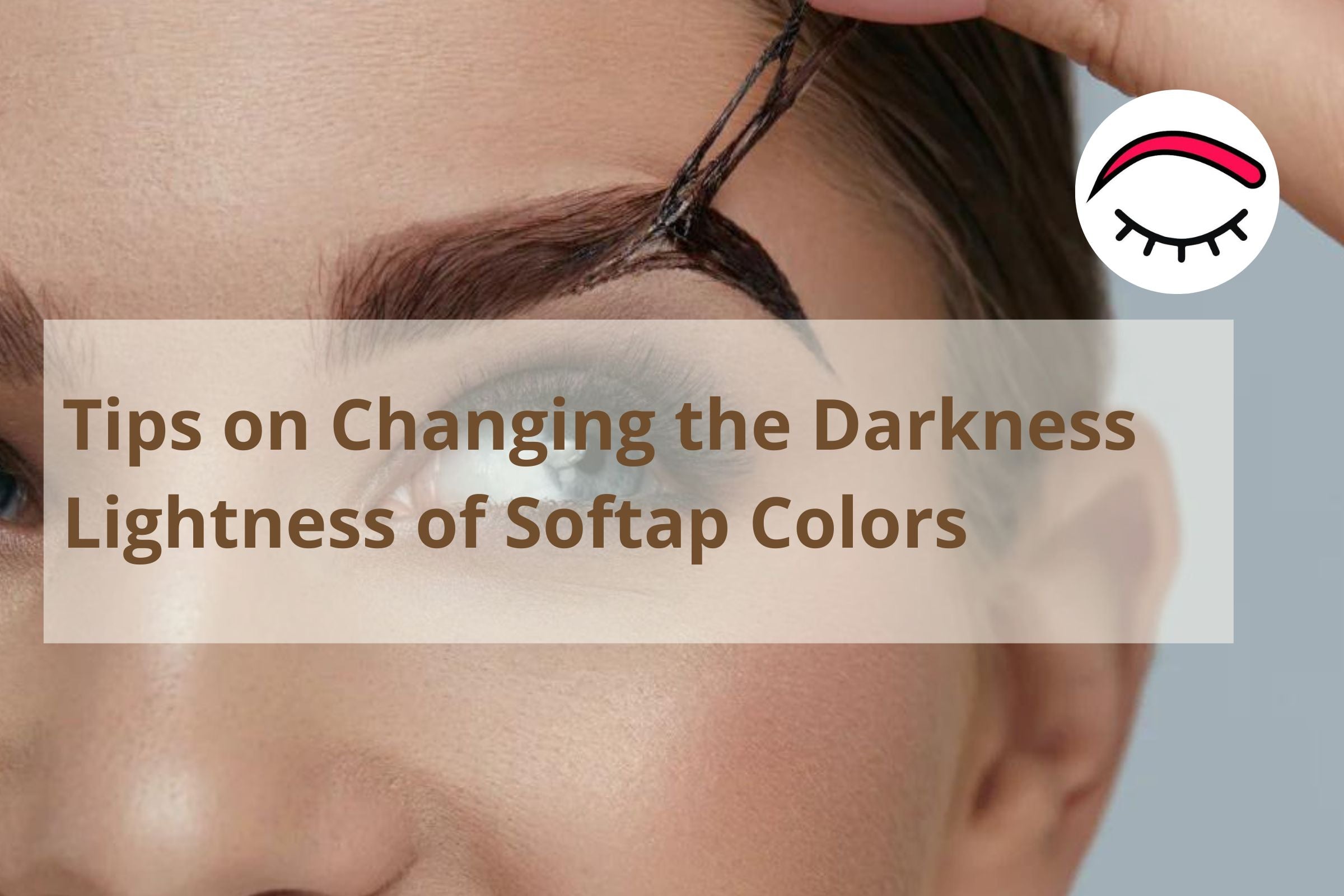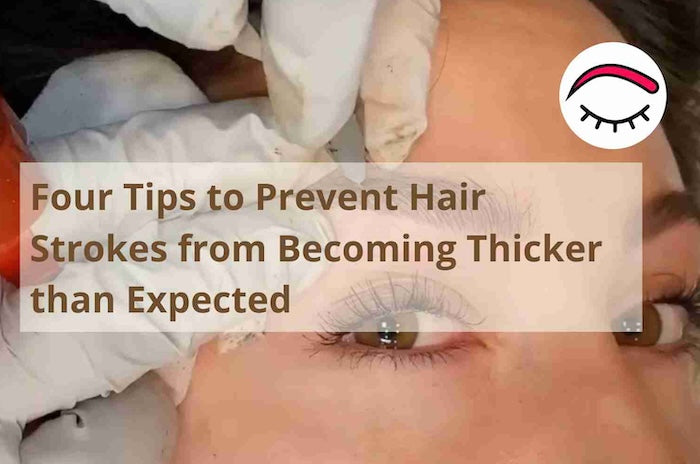Four Tips to Prevent Hair Strokes from Becoming Thicker than Expected
There are many unexpected outcomes while doing microblading, and some artists think the hair strokes become thicker because of the pigments used. Still, in reality, it depends mainly on the technique, which will be this article's focus.
In this article, we'll explore four tips to prevent hair strokes from becoming thicker than desired. Whether you're a seasoned professional or new to microblading, these tips can help you achieve beautiful and natural-looking results for your clients.
As I have mentioned in previous articles, in microblading and PMU in general, four factors affect the final result in terms of shape, color fixation, and color retention. Some are under your control, and some are not.
- The color/pigment used*
- The design*
- The technique.*
- The skin-pigment relationship**
Note: Those marked with * are the ones you may control.
The technique
It is associated with the needles, method, and how you perform it.
You may get beautiful results with any method, Microblading tools, Softap, or Permanent makeup machines. The most important thing is that you have the knowledge and the experience to perform a beautiful job.
My TIPS to prevent hair strokes from becoming thicker than expected are:
- First
- Verify that the angle at which you position the needle in your client's skin is 90 degrees; it means the needle or blade must be perpendicular when you do the microblading movement. If you tilt it, the pigment will also be implanted around the hair stroke, and you will see a shadow around it, which makes it look thicker and not well-defined.

- Second
- The thickness of the needles: The thinner the needles, the thinner the hair strokes. Also, select flexible needles to prevent damage to the skin

- Third
- If you are doing individual hair strokes and microshading simultaneously, you may see that some hair strokes become thicker, so make sure you establish well the effect you want before starting. In this case, the hair strokes won't be as defined as you do, only the hair strokes.

- Fourth
- If your client had previous permanent makeup, make sure you make the changes you need to make before designing individual hair strokes.

The Color
The characteristics of the pigment you use are related to the color, hue and intensity of your job and don´t affect the thickness of the individual hair strokes.
Of course you need to select the color according to the effect you want to achieve independently of the technique you use. It is important to select a color that matches your client's eyebrow hair color. (Use the Color Finder App).
To guarantee that the Softap color consistency and color concentration is ideal, shake and squeeze the tubes before you take the color out. By doing this, you mix the glycerin and the color substrate. The creamy consistency is critical; if it is too liquid, it doesn't work.
Remember that the pigments are made with different concentrations of tones, and the dye must be well mixed to have the appropriate percentage of each one of them and obtain the best result.
The design
The design affects the eyebrows and hair strokes shape, but it doesn't affect how thick the hair strokes come out.
The skin - pigment relationship
Is related to color fixation and retention more than the result in terms of thickness.
The Pigment interacts with the skin differently during the first month after the procedure. You will see the final result after that, so don't do any touchups before that time, even if you don't see color or the color looks weird.
Because the microblading technique is a semi-permanent makeup, the color will remain in the skin shorter than in eyebrows performed with other methods. Doing a regular touchup will guarantee that the color always will be fresh and vibrant.
Schedule the appointment once the procedure is done.
The aftercare
This factor also affects color fixation and retention more than the result in terms of thickness.
Just remember that people highly exposed to the sun, chlorine or salt water, and glycolic or retinoic acid, among others, may eliminate the color faster than people who are not. It is essential to provide aftercare instructions to our clients and recommend aftercare products to ensure that they follow the necessary steps to maintain the longevity of their new look. For more aftercare instructions, read the blog PMU AFTER CARE INSTRUCTIONS
If you have problems with the result of your hair strokes, check your technique, and practice with a synthetic material such as practice skins before your next procedure
Remember, practice, practice, and practice is the key to perfection.

I hope that what I do, inspires you for your next Procedure!
Talk soon,
Dr. Sandra Cardona
Must-Have Microblading Needles
explore more ARTICLES

AFTER CARE DIRECTIONS FOR YOUR CLIENTS
Several factors affect the fixation of the Softap pigment, including the skin type of your client, their immune system response, the number of passes you do during the procedure, and the technique you performed. Still, it is also imperative that the person follows the post-procedure instructions since this directly affects the color retention and, of course, the final result.

The Wave Of PMU Corrections Is Here
Many technicians write to me asking for guidance on correcting or erasing the work using Lightning™ remover since consultations about these issues are rising in their offices.

Tips on Changing the Darkness /Lightness of Softap Colors
Tips and techniques for effectively changing the darkness or lightness of Softap colors. Whether you need to modify the pigment itself or adjust a previous permanent makeup procedure We offer a wide variety of supplies for all your permanent makeup needs, including microblading, eyebrow tattooing, eyeliner, and lip tattooing.

Four Tips to Prevent Hair Strokes from Becoming Thicker than Expected
In this article, we'll explore four tips to prevent hair strokes from becoming thicker than desired, covering factors that are both under and out of your control. Whether you're a seasoned professional or new to microblading, these tips can help you achieve beautiful and natural-looking results for your clients.
Subscribe for our training newsletter
WORLDWIDE LEADERS











